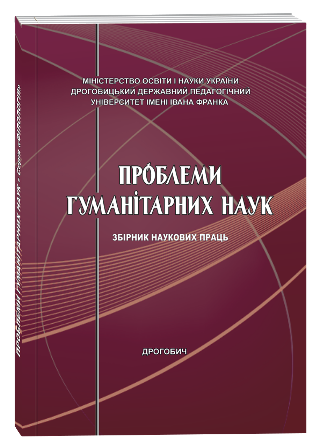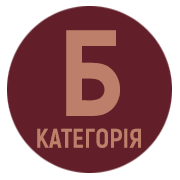TRENDS OF VARIATION AS AN IMMANENT FEATURE OF THE MODERN UKRAINIAN LANGUAGE
DOI:
https://doi.org/10.24919/2522-4565.2023.57.3Keywords:
variant of language units, variant of language norms, implementation of variant units, formal variants, lexical variantsAbstract
The article characterises the main trends in the development of variation in the Ukrainian language system at the present stage of its evolution. The purpose of the study is to analyze the phenomenon of variation, identify the factors that determine its activation in language practices. Identify the means of implementing variation at different language levels, in particular at the lexical level. To find out the consequences of expanding variant units and their impact on the dynamics of modern literary norms. On the basis of a comparative analysis of semantic and functional features of variant units that enliven usage in modern language, their regularities are traced, prospects for fixing in uzus and compliance with language norms are outlined, and general principles of their codification are determined. It is found out that the manifestations of variation as the ability to express the same essence by different means are not only different phonetic, grammatical, accentuation, graphic modifications of word forms, but also lexical, word-forming synonyms. The intensity of the formation of variant units at the present stage of development of the Ukrainian language is due to a number of extralinguistic factors, as well as the search for the most optimal and exemplary forms of implementing the language tastes of society. The nature of the new invariants is due to such opposite trends in the evolution of the national language: on the one hand, the orientation of society to the standards and values of Western countries, the cultivation of the prestige of Western European languages; on the other hand, the interest in native culture, traditions and the desire for national identity. Variants are formed due to the formation of new categories based on word-forming models available in the language; due to the activation of forgotten specific invariants, which, unlike used ones (often artificial, unnatural), reflect the uniqueness of the Ukrainian language; by borrowing vocabulary from other languages. It is proved that variation is a sign of speech dynamics, a manifestation of its system capabilities, and parallelism of language tools.
References
Городенська К. Г. Нові тенденції та явища у творенні гібридних відсубстантивних загальновідносних прикметників. Науковий вісник Ужгородського університету. Серія : Філологія. 2023. Вип. 2(50). С. 95–101.
Жарко С. Ю. Тенденції сучасної української мови та їх відображення в мові ЗМІ. Вісник Дніпропетровського університету. Серія : Соціальні комунікації. 2016. Т. 24. №12. С. 64–70.
Коць Т. А. Літературна норма у функціонально-стильовій і структурній парадигмі. Київ : Логос. 2010. 103 с.
Коць Т. А. Функціональний аспект лексичної норми в засобах масової інформації (на матеріалі газет 90-х років ХХ ст.) : дис. канд. філол. наук, 10.02.01. Київ, 1997. 194 с.
Кочан І. М. Варіанти і синоніми термінів з міжнародними компонентами. Вісник Національного університету «Львівська політехніка». Серія «Проблеми української термінології». 2008. С. 14–19.
Михайлова Т. В. Семантичні відношення в українській науково-технічній термінології : дис. кан. філол. наук, 10.02.01. Харків, 2002. 128 с.
Селіванова О. О. Сучасна лінгвістика : термінологічна енциклопедія. Полтава : Довкілля. 2006. 716 с.
Соломенко Л. І. Особливості впливу сучасних засобів масової інформації на формування та розвиток масової мовленнєвої культури. Культура і сучасність : альманах. 2022. Вип. 2. С. 42–48.
Струганець Л. В., & Бігун О. А. Варіантність мовних засобів у сучасній українській літературній мові (соціолінгвістичний аспект). Наукові записки ТНПУ ім. В. Гнатюка. Серія : Мовознавство. 2022. № 1. С. 18–28.
Тараненко О. О. Активізація змін у межах явища мовної варіантності в українській літературній мові новітнього періоду (кінець XX – XXI ст). Мовознавство. 2017. №3. С. 17–38. Український правопис. Київ : Наукова думка, 2019. 392 с.



